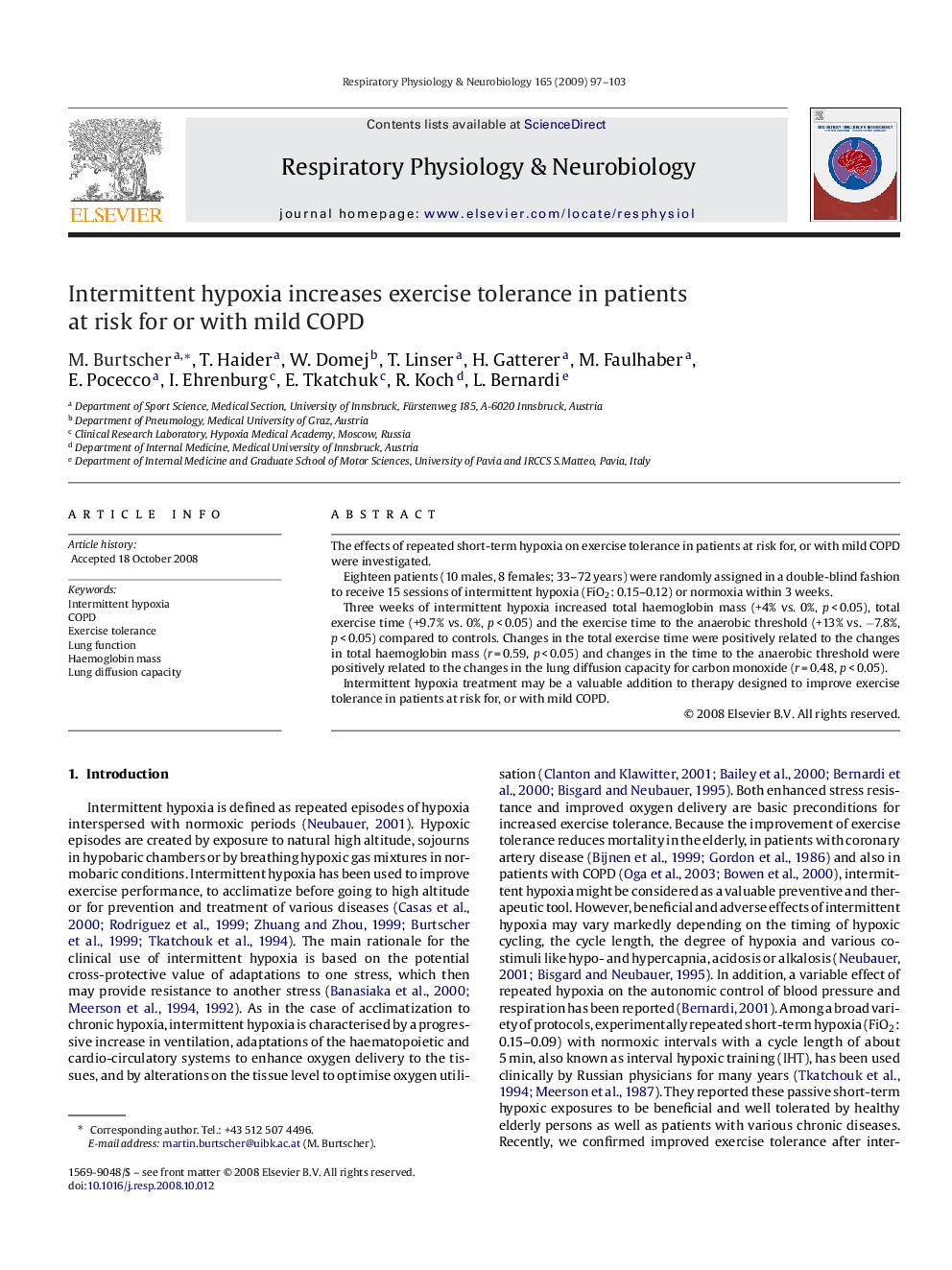| Article ID | Journal | Published Year | Pages | File Type |
|---|---|---|---|---|
| 2848011 | Respiratory Physiology & Neurobiology | 2009 | 7 Pages |
The effects of repeated short-term hypoxia on exercise tolerance in patients at risk for, or with mild COPD were investigated.Eighteen patients (10 males, 8 females; 33–72 years) were randomly assigned in a double-blind fashion to receive 15 sessions of intermittent hypoxia (FiO2: 0.15–0.12) or normoxia within 3 weeks.Three weeks of intermittent hypoxia increased total haemoglobin mass (+4% vs. 0%, p < 0.05), total exercise time (+9.7% vs. 0%, p < 0.05) and the exercise time to the anaerobic threshold (+13% vs. −7.8%, p < 0.05) compared to controls. Changes in the total exercise time were positively related to the changes in total haemoglobin mass (r = 0.59, p < 0.05) and changes in the time to the anaerobic threshold were positively related to the changes in the lung diffusion capacity for carbon monoxide (r = 0.48, p < 0.05).Intermittent hypoxia treatment may be a valuable addition to therapy designed to improve exercise tolerance in patients at risk for, or with mild COPD.
